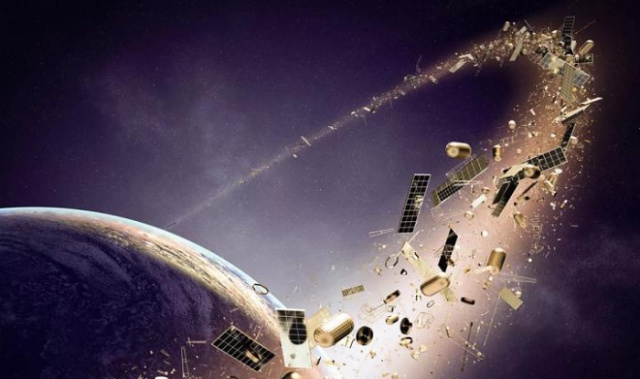A burial orbit is used to remove expired satellites.
MOSCOW, June 3. /tass/. Technologies for cleaning space from debris are being developed by many scientific groups, but so far humanity does not have effective ways to get rid of thousands of inactive vehicles and their debris. At the same time, over the past decade, the number of operating satellites in low-Earth orbit has increased almost 10 times, Polina Levkina, a researcher at the Solar System Research Department at the Institute of Astronomy of the Russian Academy of Sciences, told TASS.
On May 10, the Kosmos-482 spacecraft de-orbited and crashed into the Indian Ocean. It was launched in 1972, but due to a malfunction of the upper stage, it remained in a high elliptical orbit of the Earth, gradually approaching the planet. The scientist recalled that there are about 11.6 thousand functioning satellites in low-Earth orbit today, almost 10 times more than a decade ago. The growth is due, among other things, to an increase in the frequency of commercial launches: entire constellations of navigation satellites are being launched into orbit. At the same time, the number of defunct vehicles remaining in near-Earth space is approaching three thousand.
"It can be assumed that the growth rate of the number of satellites in near-Earth space will continue in the near future. At the same time, there are currently no mass cleaning facilities, so the outer space around our planet will continue to accumulate debris. Quite a few scientific projects have already been devoted to solving this problem. For example, researchers are developing manipulators and artificial networks to collect debris and trap small spacecraft. However, the development of such technologies takes time," she said in an interview with TASS.
A "graveyard" in space or falling to Earth
The astronomer pointed out that today, a burial orbit is used to remove satellites that have expired: the devices are transferred to a higher orbit, which serves as a kind of cemetery.
"There is a natural purification mechanism in low orbit - uncontrolled objects, obeying the laws of celestial mechanics, lose height and enter the dense layers of the atmosphere of our planet," the expert explained, noting that the recent fall of the Cosmos-482 station to Earth was an example of such a mechanism.
Risks from space debris
Space debris is dangerous because, when it collides with operating devices, it can turn them into garbage, the scientist noted. This is especially true for low orbits (up to 2,000 km).
"At the speeds possessed by a particle in near-Earth space (up to 10 km/s), the collision of a satellite with a large fragment of space debris leads to its destruction and the formation of debris. A large number of collisions can increase the population of space debris to a catastrophic state and lead to the so-called cascade effect (Kessler syndrome). In this case, the operation of satellites and the launch of new vehicles into orbit will be difficult. This will affect, among other things, those satellites that provide communications, navigation, and Earth monitoring," Levkina added.
In the context of the growing density of near-Earth orbit by satellites, the astronomer pointed out the importance of developing accurate models of the movement of artificial Earth satellites and space debris, as well as regularly updating these models through monitoring data.
"The more accurately we know the current position of the population of artificial objects in space, the better we can predict their position in the future. With a large increase in the number of monitored objects, the number of observation posts - ground stations - with appropriate software and infrastructure should also increase," she concluded.

